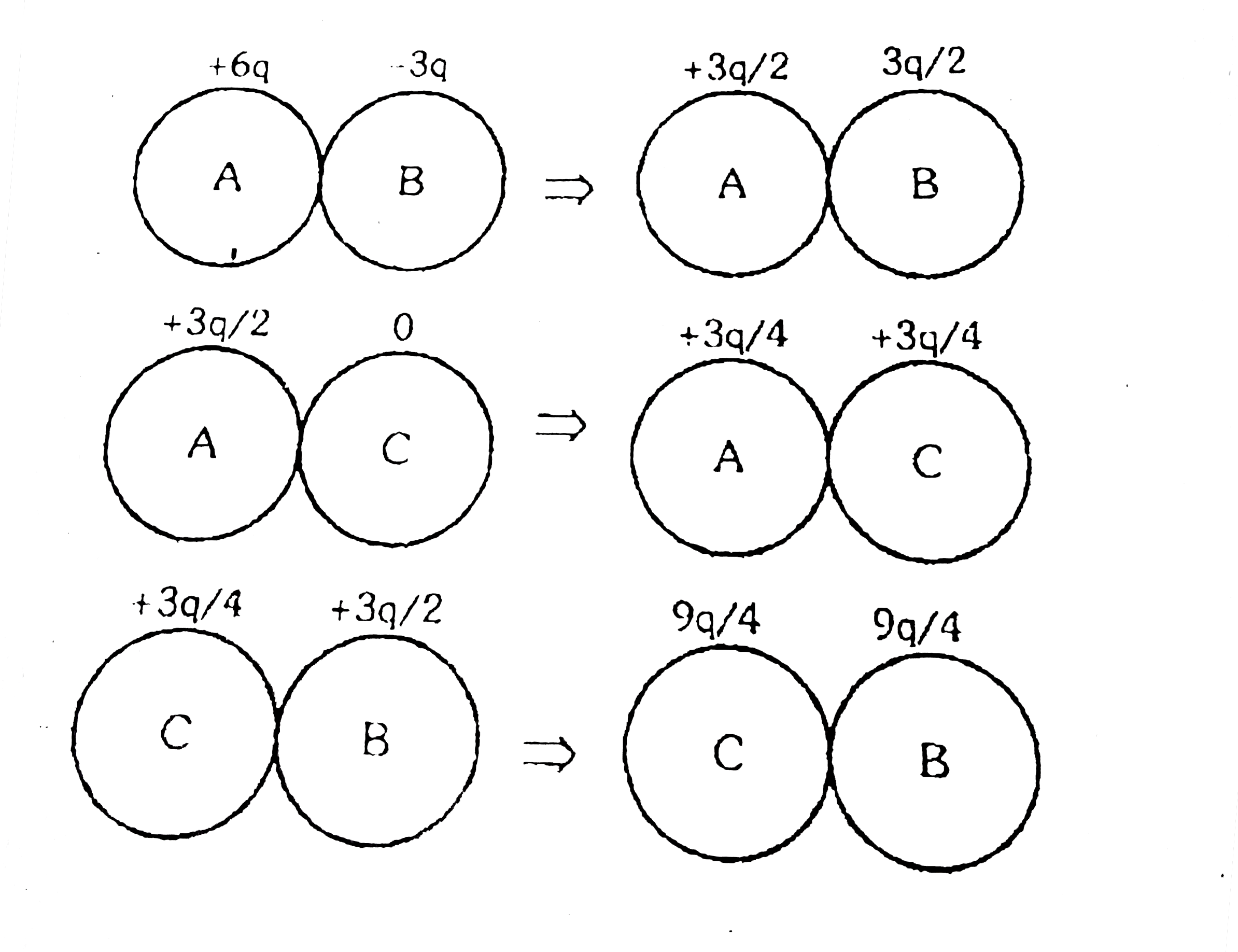Consider three identical metal spheres A,B and C. Sphere A carries charge +6q, sphere B carries charge −3q and sphere C carries no charge . Spheres A and B are touched together and then separated. Sphere C is then touched to sphere A and separated from it . Finally the sphere C is touched to sphere B and separated from it . Find the final charge on the sphere C.
The correct Answer is:1.125q
Topper's Solved these Questions
- MISCELLANEOUSBOOK - ALLENCHAPTER - MISCELLANEOUSEXERCISE - Exersice-04[B]
16 Videos
- MISCELLANEOUSBOOK - ALLENCHAPTER - MISCELLANEOUSEXERCISE - Exercise-05(A)
35 Videos
- MISCELLANEOUSBOOK - ALLENCHAPTER - MISCELLANEOUSEXERCISE - Comprehension 9
2 Videos
- KINEMATICS (MOTION ALONG A STRAIGHT LINE AND MOTION IN A PLANE)BOOK - ALLENCHAPTER - KINEMATICS (MOTION ALONG A STRAIGHT LINE AND MOTION IN A PLANE)EXERCISE - BEGINNER S BOX-7
8 Videos
- PHYSICAL WORLD, UNITS AND DIMENSIONS & ERRORS IN MEASUREMENT BOOK - ALLENCHAPTER - PHYSICAL WORLD, UNITS AND DIMENSIONS & ERRORS IN MEASUREMENT EXERCISE - EXERCISE-IV
8 Videos
Similar Questions
Consider three identical metal spheres A,B and C. Spheres A carres charge +6q carries no charge . Spheres A and B are touchd together and them separated. Sphere C is then touched to sphere A and separated from it . Finally the sphere C is touched to sphere B and separated from it . Find the final chage on the sphere C.
View SolutionTwo identical conducting spheres are charged by induction and then sepatatd by a large distance, sphere-1 has charge +Q and spher-2 has charge -Q. A third sphere is initially uncharged. If sphere-3 is touched to sphere-1 and sepatated and then touched to sphere-2 and separated what is the final charge on each of the three spheres?
View Solution
Knowledge Check
Consider three identical metal spheres, A, B and C. Sphere A carries of −2.0μC, spheres B carries a charge of −6.0μC, and spheres C carries a charge of +5.0μC. Sphere A and B are touched together and then separated. Sphere B and C are then touched and separated. Does sphere C end up with an excess or a deficiency of electrons and how many electrons is it ?
Adeficiency, 6×1013Bexcess, 3×1013Cexcess, 2×1013Ddeficiency, 3×1012Two identical non-conducting spheres having charges of -12 nC and + 8 nC are touched together and then separated. The 3 nal charge on each is
A−2ncB−(23)ncC+2nCD+4nCWhen these two spheres are made to touch with each other, then final charge on bigger sphere will be
 A0μCB12μCC4μCD8μC
A0μCB12μCC4μCD8μC
Initially, sphere A has a charge of -50 e and sphere B has a charge of +20e. The sphere are made of conducting material and are identical in size. If the spheres then touch, when is the resulting charge on sphere A?
View SolutionTwo identical metallic sphere's A and B having charges +4Qand−10Q are kept a certain distance apart. A third identical uncharged sphere C is first placed in contact with sphere A and then with sphere B. Spheres A and B are then brought in contact and then separated. Find the charges on the spheres A and B.
View SolutionTwo indentical metallic spheres A and B, each carrying a charge q repel each other with a force F. A third metallic uncharged sphere C of the same size is made to touch the spheres A and B alternately and then removed away. What is the force of repulsion between A and B ?
View SolutionTwo spheres are separately charged and then brought in contact, so
View SolutionConsider three concentric metallic spheres A, B and C of radii a, b, c respectively where a<b<c, A and B are connected whereas C is grounded. The potential of the middle sphere B is raised to V then the charge on the sphere C is–
View Solution

